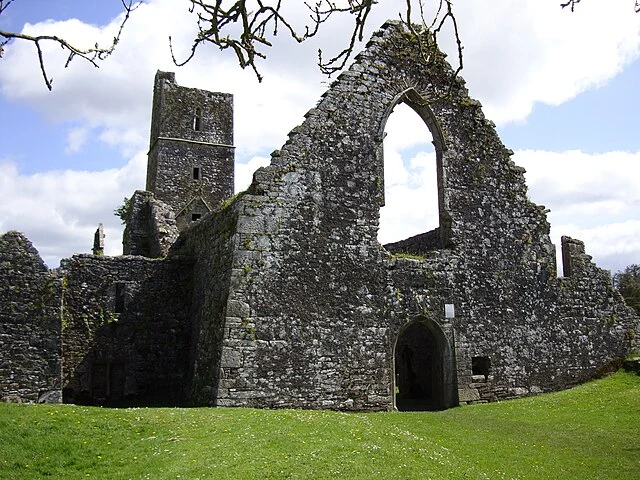Kilcrea Friary is a significant historical and archaeological site in County Cork, Ireland. Founded in 1465 AD, this friary stands as a testament to the medieval period in Ireland and the religious orders that shaped its history.
Get your dose of History via Email
Foundation and Historical Context
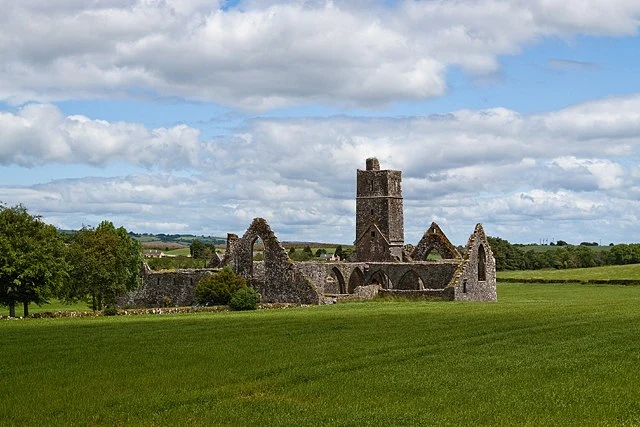
Kilcrea Friary was established by Cormac Láidir MacCarthy, the Lord of Muskerry. The MacCarthy family was a powerful Gaelic Irish dynasty that controlled large parts of Munster. The friary was part of the Observant reform movement within the Franciscan order, which sought to restore the strict observance of monastic rules.
The foundation of Kilcrea Friary occurred during a time of religious and political upheaval in Ireland. The 15th century saw increasing English influence, but Gaelic lords like the MacCarthy’s maintained their power and cultural traditions. Kilcrea was both a religious institution and a symbol of MacCarthy’s authority.
Architectural Features
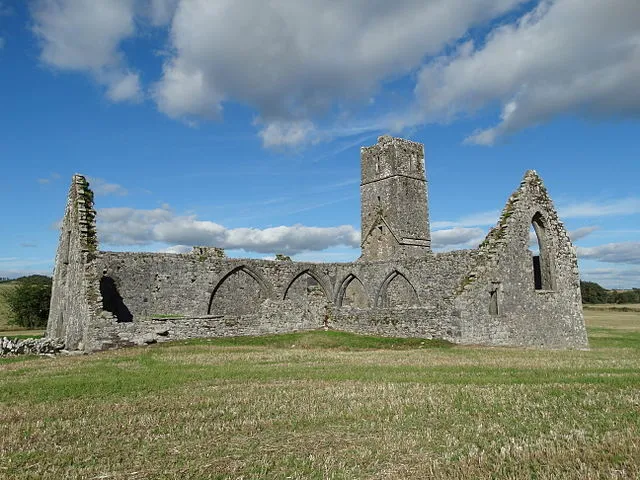
Kilcrea Friary exemplifies late medieval Irish ecclesiastical architecture. The friary’s layout follows a traditional pattern, with a church, a cloister, and domestic buildings arranged around a central courtyard.
The church is the most prominent structure, featuring a long nave, chancel, and transept. The nave is divided into two sections by an arcade, which would have separated the friars from the lay congregation. The chancel contains the remains of several MacCarthy lords, including Cormac Láidir MacCarthy himself.
The cloister, located to the north of the church, is surrounded by a covered walkway. This area was the center of monastic life, where friars would meditate and study. The domestic buildings, including the refectory and dormitory, are arranged around the cloister.
One of the most notable features of Kilcrea Friary is its tower. The tower, which rises above the crossing of the church, served both as a belfry and a symbol of the friary’s importance. It remains one of the best-preserved elements of the site.
Religious and Social Significance
Kilcrea Friary was an important religious center in medieval Munster. The friars who lived there were part of the Franciscan Order, which was dedicated to preaching, teaching, and serving the local community. The friary would have been a place of worship, learning, and charity.
The friary also served as a burial place for the MacCarthy family. This further underscores its significance as a site of both religious devotion and family prestige. The presence of these tombs reflects the close relationship between the friary and the ruling Gaelic lords.
Decline and Ruin
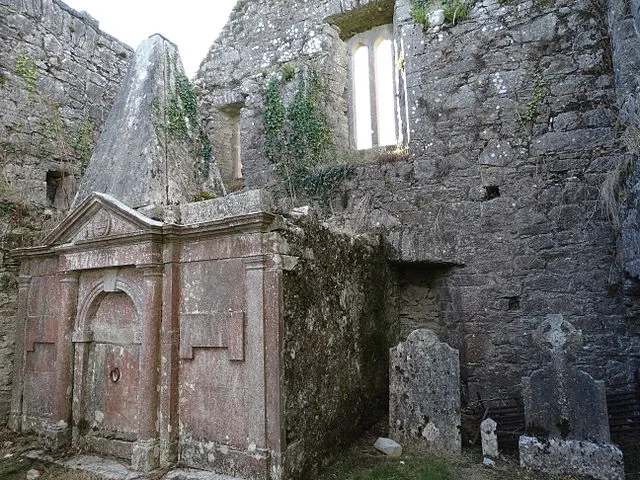
The decline of Kilcrea Friary began with the Dissolution of the Monasteries under King Henry VIII in the 16th century. In 1542 AD, the English Crown confiscated the friary’s lands and buildings. However, the friars continued to live there for some time, despite the official suppression of their order.
By the early 17th century, Kilcrea Friary was in ruins. The friars had abandoned the site, and the buildings fell into disrepair. The friary, like many others in Ireland, became a victim of the political and religious turmoil of the period.
Today, Kilcrea Friary is a ruin. However, it remains an important site for historians and archaeologists, offering valuable insights into Ireland’s medieval past.
Kilcrea Friary In Modern Times
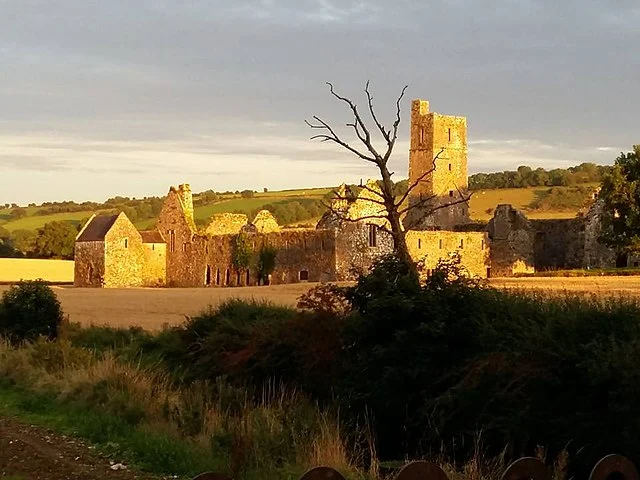
Kilcrea Friary is now a protected national monument. The site is open to the public and is a popular destination for those interested in Ireland’s history. Efforts to preserve the friary’s remains are ongoing, ensuring that this important piece of Irish heritage is not lost to time.
Researchers continue to study Kilcrea Friary to learn more about its history and the lives of those who lived there. Archaeological excavations have revealed artifacts and structural details that contribute to our understanding of the friary’s role in medieval Ireland.
Conclusion
Kilcrea Friary is a site of great historical, architectural, and cultural significance. Its ruins stand as a reminder of Ireland’s rich medieval heritage and the complex interplay of religion, politics, and power in the past.
Source

